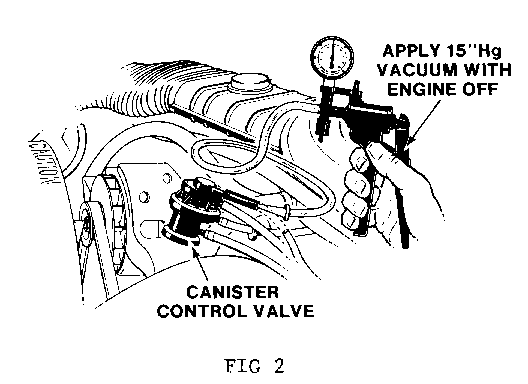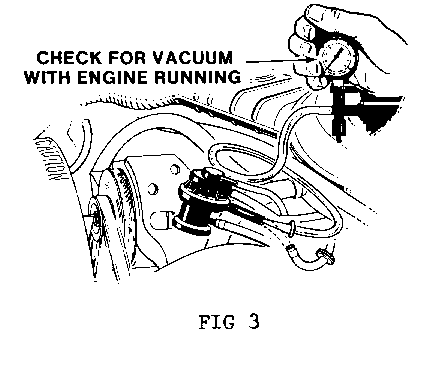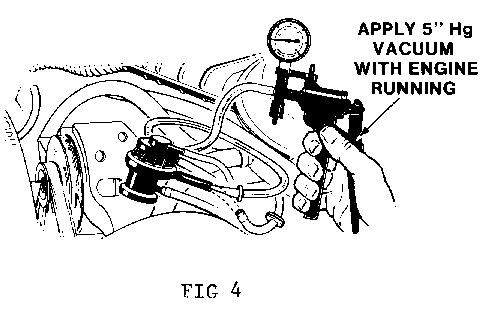CANISTER CONTROL VALVE DIAGNOSIS INSTRUCTIONS

CANISTER CONTROL VALVE DIAGNOSIS ON VEHICLES 1982-86 GRAND PRIX, FIREBIRD AND BONNEVILLE MODELS EQUIPPED WITH 3.8L V6 (VIN CODE A) OR 5.OL V8 (VIN CODES G OR H) CARBURETED ENGINES
Some four port canister control valves have been replaced as a result of fuel found in the valve or in the carb bowl vent line. The presence of fuel found in this area does not necessarily indicate a faulty valve. The function of the valve can easily be checked on the vehicle by following the service procedure outlined below:
On Vehicle Diagnosis
1. Remove the hose connected to the control vacuum port (small top port) on the canister control valve. 2. Connect a hand vacuum pump to the port and apply 15" Hg. vacuum. If the diaphragm holds vacuum for at least 20 seconds, reconnect the hose and proceed to step 3. If the valve fails to hold vacuum replace the valve. 3. Start the engine and warm it up to normal operating temperature. 4. Disconnect the carb bowl vent line at the canister control valve and connect a hand vacuum pump to the carb bowl line port on the valve. Allow the engine to continue to run for 30 seconds and observe if vacuum builds up on the gage. If so, replace the valve. 5. With the engine still running and the vacuum pump still connected, apply 5" Hg. vacuum and observe the gage. If the valve doesn't hold vacuum for at least 20 seconds, replace the valve. Otherwise, the valve is functional.
If driveability symptoms still exist, please refer to section 6El-B of the appropriate service manual for additional diagnostic information.




General Motors bulletins are intended for use by professional technicians, not a "do-it-yourselfer". They are written to inform those technicians of conditions that may occur on some vehicles, or to provide information that could assist in the proper service of a vehicle. Properly trained technicians have the equipment, tools, safety instructions and know-how to do a job properly and safely. If a condition is described, do not assume that the bulletin applies to your vehicle, or that your vehicle will have that condition. See a General Motors dealer servicing your brand of General Motors vehicle for information on whether your vehicle may benefit from the information.
